Welcome to Bourbon Springs
The Bourbon Springs Series is a nine-book series of small town contemporary romances set in Bourbon Country–central Kentucky, the Bluegrass Region. The idea came easily enough–I live in this place! I’m surrounded by distilleries. Once I thought of the series idea, with a bourbon distillery at the heart of the stories, the book titles quickly popped into my mind–all related to bourbon and bluegrass.
And the research–if you can call it that–for this series was certainly fun: I took several tours of local bourbon distilleries.
So where is Bourbon Springs?
In reality, there are actually two spots in Kentucky with this name–both in Nelson County, home to Bardstown, the Bourbon Capital of the World ™. Not very surprising. When I started writing the series, I didn’t know about these places.
If my Bourbon Springs existed, however, I know exactly where it would be: on State Route 555, a few miles north of the junction with State Route 438, and southwest of a tiny town called Willisburg.
And here’s a map of what Bourbon Springs looks like. Ashbrooke Pike is the same as State Route 555 on the above map.
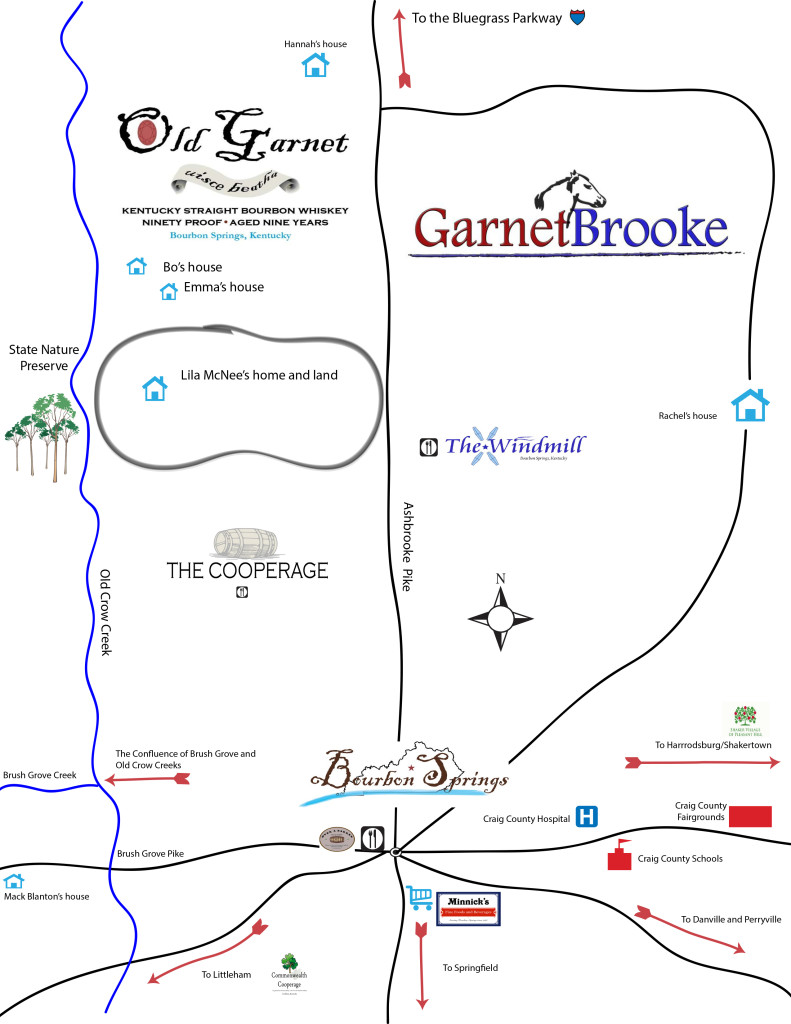
Bourbon Springs: Background and Inspiration
Here are some posts with lots of background about my area. You can learn about the things and places that appear in the stories and which inspired me.
One snowy winter’s day I went to a cooperage (where they make barrels) and a nearby distillery…
The hero in Toast and Char, Bourbon Springs Book 8, owns a cooperage. So of course I took a trip to one when I was writing that book.
Kentucky Cooperage
The main independent cooperage in Kentucky is Kentucky Cooperage, operated by Independent Stave Company in Lebanon, Kentucky. I had heard about the cooperage from visits to Bourbon Trail distilleries and had checked out their website. But since I was writing about a guy who was part owner of a cooperage, I knew I needed to go and see the place for myself.
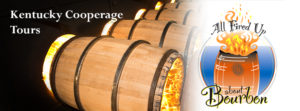
From the Independent Stave website
I watched a few videos online, but it wasn’t enough to satisfy my nerdly brain. So one snowy winter day I headed south—and, not coincidentally, directly through the area where Bourbon Springs would be if it really existed. I do take a few geographic liberties in describing a few things—Bourbon Springs is fictional, after all. But I saw the sights I anticipated—rolling hills of the outer Bluegrass region mixed with the pointed Knobs to the south and west.
The Tour
It started at Kentucky Cooperage started in an employee breakroom. (There is now an updated facility to accommodate the influx of bourbon tourists.) Part of the room had a sitting area where visitors watched the same video that’s available online. After watching that, we got a headset with speaker in it; we were going into very loud places.
The tour began in the area where coopers “raise” or build a barrel. We then went to the area where the barrels were charred, five at a time. That day they were making barrels for Maker’s Mark. The guide said that they run one brand every day and that’s all they run. After that, we went to inspection, where a field of new barrels, stacked two-high, spread out through the warehouse. A cooper appeared and gave a demonstration of how to remove a defective stave (it was like a puzzle). They seal any extra cracks or gaps with dried cattails! At the Kentucky Bourbon Festival in Bardstown one recent fall, I saw coopers from Kentucky Cooperage repairing barrels with cedar plugs in addition to cattails.
Then it was over. The tour was only about fifteen minutes long but interesting.
And what was the best part?
The smell!
All that wood—they steam it and, of course, set it on fire to char it (and, yes those barrels really burn). The scent was wonderful, like the most perfect fire you could possibly build in your own hearth. It was a deep, spicy, even food-like aroma that clung to me, through my hair and my clothes. The scent wasn’t the same as one gets after being around a campfire. It was more akin to the kind of smell one has after cooking a really big dinner, like Thanksgiving, after roasting a very large piece of meat. It was that good.
On to the distillery
Having time on my hands and knowing a distillery was nearby, I hastened to Limestone Branch Distillery across town. The tour, like at the cooperage, was free. The distillery was new and small, but a veritable temple to bourbon. The place is owned by a couple of Beams and, as they are very proud to say, they are the only distiller-owner Beams at present. Limestone Branch was only opened in 2012.
Not only are the owners direct Beam descendants, they are direct Dant descendants, another legendary bourbon making family. The tour took as long to talk about history as it did to show us the operational distillery itself. These people revere their past, and it shows.
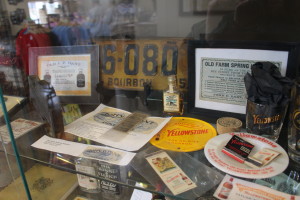
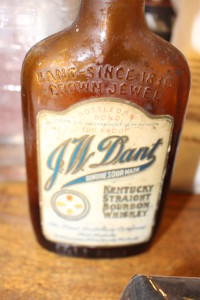
The distillery makes a lot of flavored products (they partnered with Moon Pie to market flavored moonshines), which isn’t my thing. So when it came to tasting, there was a bunch of flavored stuff. I was the only woman in the small group; several of the men along were in the area for a national farm equipment show in Louisville.
So what did these burly fellows drink as their free sample shots?
Yeah, the “girly” stuff: the flavored moonshines—banana, caramel, chocolate, apple, whatever. I got nothing against that stuff, but I wanted some straight corn. No straight bourbon was offered.
Who was the first to ask for the straight ‘shine?
Yeah, ME.
Only after that did the guys ask for the ‘shine. Insert eye-roll here.
The guide said the ‘shine should go down smooth and then I should feel a warmth in my chest. Well, I felt the burn on my lips and in my mouth—not as smooth as claimed, but still pretty darned smooth for ‘shine.
Before I left, one of the Beams came and talked to the group. I went out back and took a few pictures of the Knobs to the south. Very pretty country.
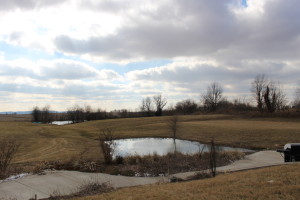
Looking south from Limestone Branch Distillery, winter 2015
Did you know that distillery cats are a thing?
Distilleries are large, rambling places full of grain. With all that corn, barley, and wheat around, they are nice targets for mice.
Enter the distillery cat.
Noah
Many distilleries have their own cat. In September 2015 when I was at the Kentucky Bourbon Festival in Bardstown, I took the tour at Willett. They had at least three distillery cats. I can only recall the names of two: Noah and Rowan (named for various Willett expressions).
Noah is seen here in the distillery building itself, on an old church pew. His water and food bowls were underneath a reception desk opposite the pew. He was very friendly and enjoyed watching the tourists and being petted.
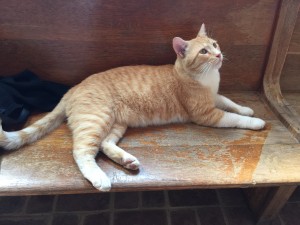
Noah, a distillery cat at Willett in Bardstown, Kentucky
Elijah
Woodford Reserve had a revered distillery cat, Elijah, who passed away a few years ago. He had his own special spot at the distillery, outside a building between the Dryer House and the old warehouse. I took these pictures when I was on a tour.
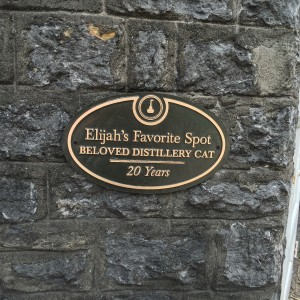

Why was the cat named Elijah? He was named for Elijah Pepper, the man who came to Glenns Creek in 1812 to farm and distill.
Oscar
When I was at the gift shop at the distillery in the visitors’ center one day, I got to meet Elijah’s successor, Oscar. He was in a shopping basket underneath a wall of bourbon on top of a used bourbon barrel. He meowed once and was happy to be petted, but wasn’t interested in raising his head beyond the edge of the basket. I didn’t notice him at first. When I was checking out, the clerk kept turning around and looking at the wall. She finally said something about how the noise “doesn’t bother him,” and I finally spotted the cat.
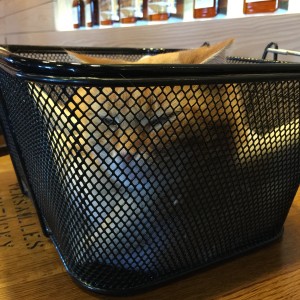
Oscar did not want to raise his head for pictures; he was only nine months old in these pictures
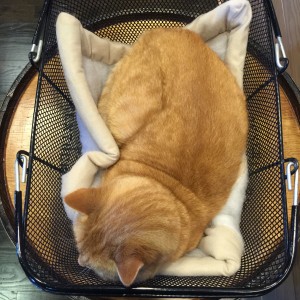
According to the clerk, Oscar stays at the administrator’s house on the grounds. When he wants to leave the visitors’ center, he goes to the backdoor (leads out onto the side porch) and waits to be let out. He was a rescue cat.
And how did Oscar get his name?
Because Elijah Pepper’s son was named Oscar. Oscar Pepper took over the distilling business after his father’s death and built part of the original distillery building, which dates to the 1840s. The distillery was once known as the Old Oscar Pepper Distillery.
Old Garnet’s distillery cat
So does Old Garnet have a distillery cat?
Yes. In the Epilogue of Cedar and Cinnamon, the existence of the Old Garnet distillery cat is revealed, as well as the reason why there hasn’t been a distillery cat in the series to date. The cat’s name is revealed in Distilled Heat, and he makes one brief appearance in the book.
Sadly, one of us in the house is allergic to cats, so we can’t have one. I’ll just have to make do by visiting a few distilleries from time to time.
This excursion ends at the Kentucky River–and with a view of a legendary bourbon distillery on the opposite bank
The distillery visitors’ center inspired one of the most important lines in Angels’ Share, Bourbon Springs Book 3. There is more information about this distillery and a description of the visitors’ center, in the backmatter of Angels’ Share.
In western Woodford County is a wonderful attraction: the Bluegrass Railroad Museum. Not only is this a “static” museum with the typical displays, it is a living, working, moving museum.
In short, you can take a train ride!
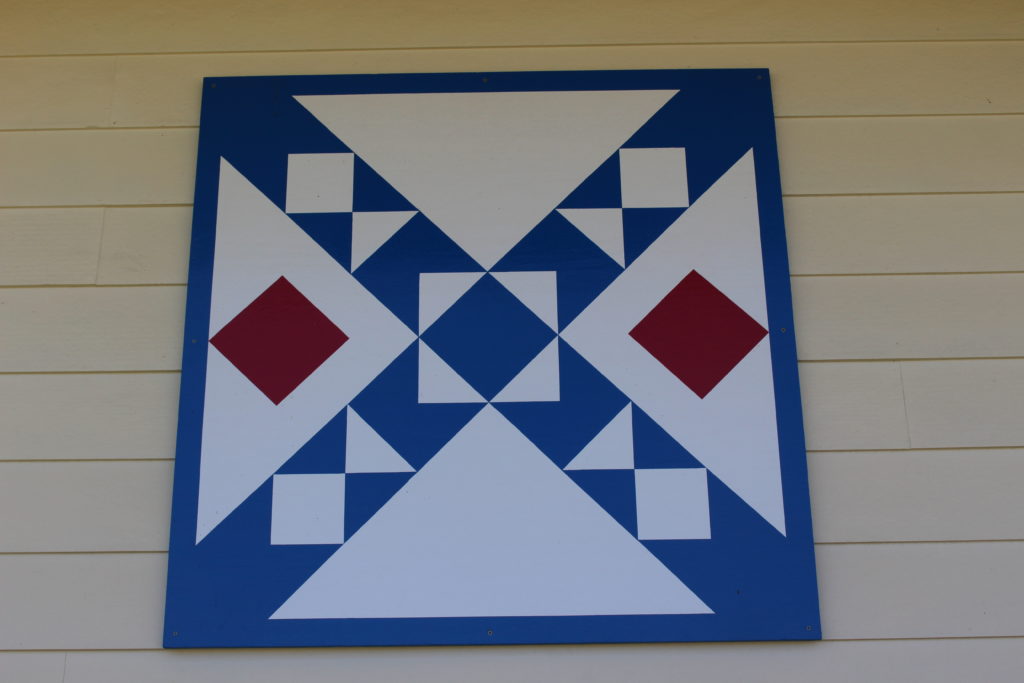
A “quilt piece” sign on the side of the museum; reflects the classic railroad crossing road sign
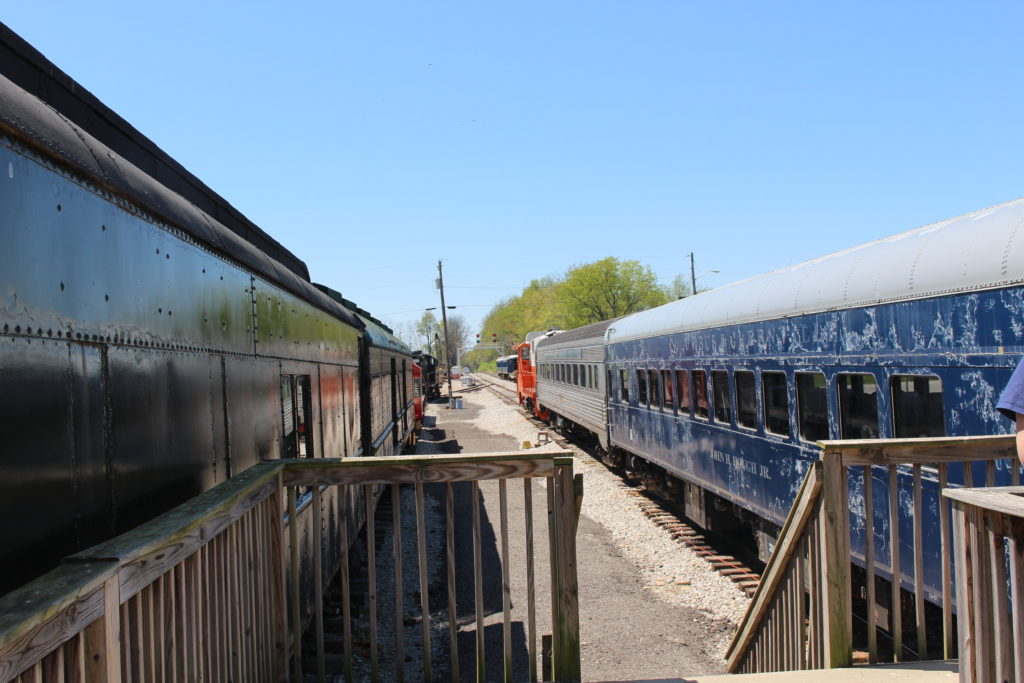
I’d been on the train ride a few years ago in the fall, but wanted another family outing, this time to see the spring colors. The weather did not disappoint, and after lunch in Versailles at Ricardo’s, we headed to the museum. Lunch at Ricardo’s was particularly appropriate because it used to be the Versailles train station.
The museum is located on the western end of town, near the baseball fields and a large recreation center. There’s plenty of free parking.
All Aboard!
This time, I opted to get first-class tickets rather than coach. On our previous excursion, I tried to save a little bit of money by buying the cheaper tickets. That really was a mistake. The seats as I recall in coach were quite hard and there’s no heating or air conditioning in that part of the train. I can attest, therefore, that the first-class tickets (five dollars more per ticket), were worth it. We had comfortable seating throughout the trip.
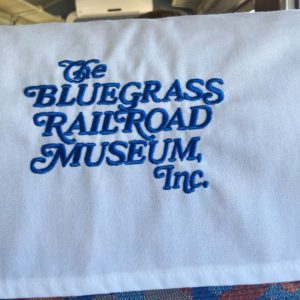
Draped on the back of every seat in first classs
The engineer explained how the whistle would blow to signal our departure from the small station, and off we went, headed west towards the Kentucky River. The river was approximately 7 miles away.
We trundled along through the Bluegrass, spotting several thoroughbred horse farms. We even made a stop in tiny Milner, where we picked up some passengers who had missed the train (and therefore about a quarter of the whole journey).
Our trip on the tracks had us running parallel to US 62; it was easy to see the cars on the road from the train (the tracks are so close to the road in places that it’s hard to see the tracks on the above map). We passed through fairly deep limestone cuts, which became more common as we approached the steep and hilly ground around the river. During this portion of the excursion, I spotted a deer running through the woods.
At the Bridge
You actually do not cross the river. Although there is a bridge, the state condemned it for passenger trains in 1937 and for freight in 1985. According to one of the guides, in the 1980s when the bridge was towards the end of its working life, the railroad workers approaching the bridge feared it. They could feel the bridge swaying under them as they passed over the river, which is over 200 feet below. The guide told a story of how railroad workers would get off the train and cross it on a hand car, leaving one poor worker (who had no doubt lost a bet) to drive the train across the river and the deep gorge.
Once at the river, you can see four distinct things.
First and straight in front of you is the bridge, looking every bit as rickety as it appears in the below photo.
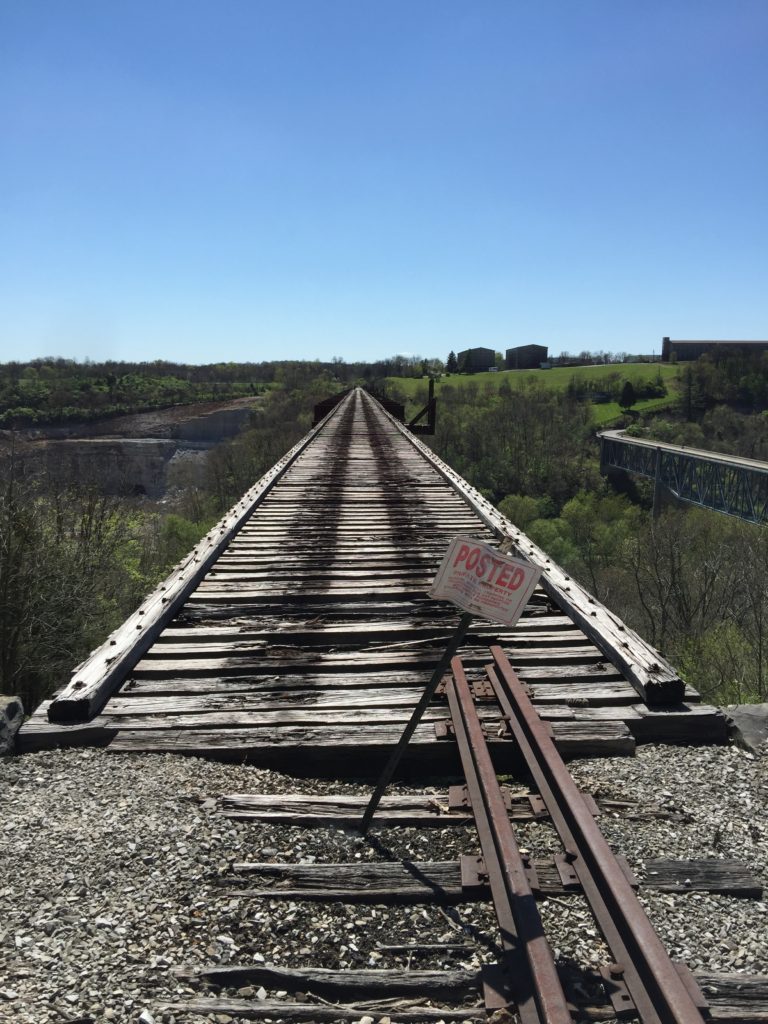
You can only go out on the bridge if you belong to a bungee-jumping club.
Second and below you is US 62, the road which runs parallel to the train tracks and crosses the river.
Third, to the right and slightly north across the river looms Wild Turkey Distillery. The rickhouses, visitors’ center, and distillery plant are all within clear view.
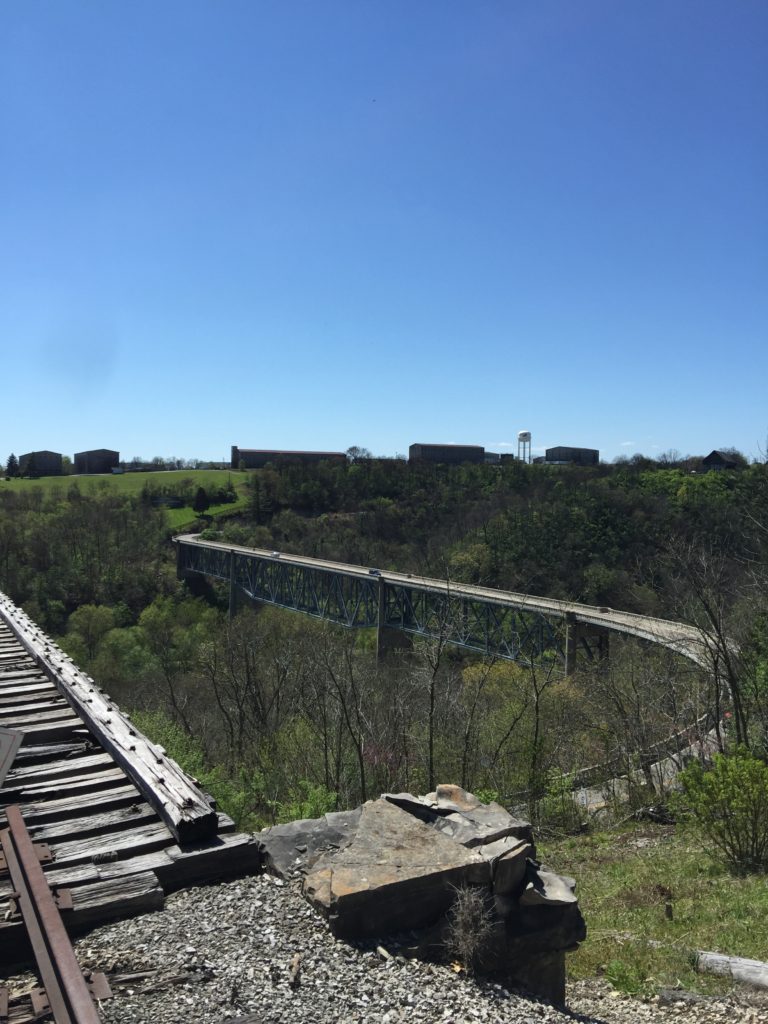
View looking west over Kentucky River gorge; Wild Turkey Distillery on far bank
Lastly, to the south is a massive quarry and to the north an electrical plant.
We could not actually see the river; we were too far up and there was already too much vegetation.
On the ride back, some of us dozed as the train trundled back to the station, almost rocking us to sleep as it swayed side to side on the tracks.
The entire excursion took approximately 2 1/2 hours, a wonderful family outing on a lovely Kentucky spring day.

